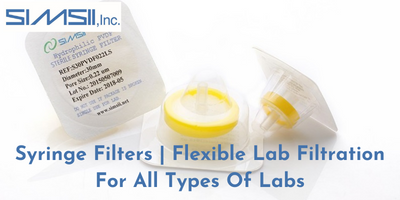
Before conducting an analysis using a technique such as high-performance liquid chromatography (HPLC), ion chromatography, gas chromatography, inductively coupled plasma (ICP), or dissolution testing, particulate impurities can be removed from liquid and gas samples using a membrane-based Sterile Syringe Filter, which is disposable device. Filtration of samples correctly enhances the quality and consistency of analytical findings while reducing the time spent maintaining analytical instruments.
Syringe Filters
When time is of the essence, many people turn to disposable syringe filters for their filtering needs. The selection process needs to begin with the application. Nonsterile syringe filters are used for general filtering in addition to sample purification. However, sterile syringe filters are utilized to sterilize and clarify clean solutions. Two primary criteria are used to classify syringe filters: the filter membrane and the filter housing.
Both of these features must be suitable for the application and the solution that will be filtered. The membranes of the Nylon Syringe Filter are matched to end applications based on their composition, filter diameter, and pore size. In contrast, the housings of syringe filters are suited to complete applications based on their design and format.
Filter size
The EFA and the hold-up volume may be approximated quite well by looking at the diameter of the syringe filter. However, as particles are extracted from the liquid, they clog the pores of the syringe filter, so decreasing the amount of the filter that can be used and finally leading to the filter's complete obstruction.
In general, fluids that include more particulate matter clog a filter more rapidly than fluids considered "clean." It is possible to filter samples with a higher level of contamination by increasing the size of the filter (and the EFA). If the pressure needed to force liquid through the filter gets very high, the filter is probably clogged and has to be replaced. If you exert too much force, you risk damaging the filter, allowing particles to get through.
The volume the filter can contain will rise proportionately with the diameter of the filter. It is the amount of liquid that is still present in the filter after it has been used. When working with costly fluids or those in short supply, it is advised that you utilize a filter with a low hold-up capacity.
Do You Need Any Pre-Filtration
When you combine a large number of particles with an ideal pore size, you create a formula for your filter to get clogged, and it will not be able to achieve the appropriate degree of filtration in terms of particle size. The use of pre-filtering is the solution to this problem.
To "eliminate" the majority of the bigger particles that may cause your filter to get clogged, pre-filtration utilizes a filter (often made of glass microfibre) that has a much wider pore size than the is contained inside the syringe filter. It may be done independently of the filtration of the syringe itself, or the pre-filter may already be "baked" into the syringe. You may learn more here.


